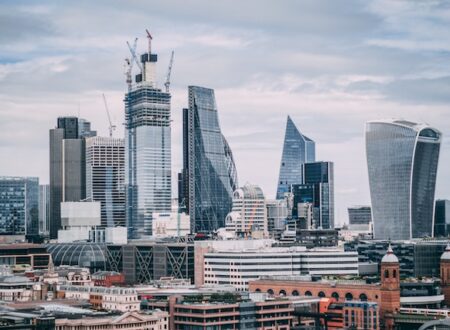Los Angeles is a city famous for its sunny weather, stunning beaches, and mountain ranges. However, behind the glamour and glitz, there are some neighborhoods that are notorious for high rates of violent crime, property crime, and vagrancy. In this list, we will discuss ten of the most dangerous areas in Los Angeles.
10 Most Dangerous Neighborhoods in Los Angeles
- Downtown LA
- West Adams
- Wholesale District/Skid Row
- Compton
- North Hollywood
- South Los Angeles
- Watts
- Koreatown
- Fashion District
- Hollywood
1. Downtown LA
Downtown Los Angeles, known as the most dangerous neighborhood in Los Angeles, is the city’s economic hub. Despite this, it has a high incidence of crime and illicit activity. According to 2021 FBI crime statistics, Downtown LA has a violent crime rate 12 times higher than the national average, making it the most dangerous neighborhood in the city. The overall crime rate, including property crimes, is 530% higher than the national average. LAPD statistics for 2022 show that there were 1,702 reported violent offenses in the area, further emphasizing its reputation as the most dangerous neighborhood in Los Angeles. Additionally, the murder rate in Downtown LA reached a record high of 490 in 2018.
It is highly discouraged to walk alone or in a group at night in Downtown Los Angeles due to its high crime rate. Homelessness is prevalent in the area, and pickpocketing and robberies are common, especially south of 3rd street, north of 7th street, west of Alameda Street, and east of Main street. Although crime isn’t as rampant during the day, it is still advised to exercise caution. It’s recommended not to carry large amounts of cash while in Downtown LA.
2. West Adams
West Adams is one of the neighborhoods with high crime rates in Los Angeles. Its population is 11,961, and it has a crime rate of 6,811 per 100,000 residents, resulting in a 1 in 15 chance of becoming a victim of a crime. Most of the crime in this area is violent crime, which is associated with gang and drug activity. Despite a significant police presence, residents often complain that the police cannot respond to multiple criminal incidents simultaneously.
Apart from gun violence, West Adams is known for crimes such as robbery, assault, and theft, making it unsafe to walk at night. Residents often express concerns about their safety while using public transportation in the area. The overall lack of safety is a major issue in this neighborhood.
3. Wholesale District/Skid Row
Skid Row, also known as the Wholesale District, is one of the most extensive homeless encampments in the United States. It is estimated that between 9,000 to 15,000 people are permanently homeless in Skid Row, which can be overwhelming for commuters and residents in the area.
Crime in the Wholesale District, also known as Skid Row, has risen by 59% since 2010. In 2013, there were 13,122 reported crimes, including 2,698 assaults, 1,350 vehicle break-ins, and 2,453 incidents of theft. The high incidence of crime in the homeless population is attributed to the widespread drug trade, along with pickpocketing and theft. San Pedro Street is one of the areas that is notorious for crime. As cycling or walking is only allowed until 6 PM, Skid Row becomes a hotspot for gang and drug activity.
4. Compton
Compton remains infamous for its gun violence, drug activity, poverty, and violent crime, despite a decline in crime rates since the 1990s. With a population of 97,740, the neighborhood has a crime rate of 3,533 per 100,000 people, which is 51% higher than the national average. Although Compton no longer has the highest murder rate in the United States, it has experienced an increase in violent and property crimes since 2020. Despite a significant police presence, residents complain that the police lack the resources to respond effectively to criminal incidents.
5. North Hollywood
North Hollywood, also known as NoHo, has a population of 64,587 and a crime rate of 2,592 per 100,000 people, which is 10% higher than the national average. NoHo shares a boundary with Universal Studios and is notorious for its gang and drug-related criminal activities.
North Hollywood has a higher crime rate than the national average, with property crimes being the most common type of crime in the area. In fact, property crimes accounted for 82% of the total crimes reported in 2022. However, other crimes like burglary, robbery, and assault also occur in the neighborhood, which has a population of 64,587. It’s important to note that areas around Magnolia, Lankershim, and the 170 highway are relatively safe during the day, and using public transit is generally safe as well.
6. South Los Angeles
The neighborhood of South Los Angeles, previously known as South Central, is considered one of the most dangerous areas in Los Angeles. With a population of 249,670, it has a crime rate of 4,268 per 100,000 people, mainly due to drug trafficking and gun violence linked to gang activity. However, there has been a gradual reduction in crime since the 1990s due to a heavier police presence. While the level of gang activity varies depending on the specific neighborhood, caution is advised when walking at night. During the day, walking is relatively safer, and using public transit is generally considered safe.
7. Watts
Watts is considered one of the most dangerous neighborhoods in Los Angeles with a crime rate of 3,514 per 100,000 people, which is 50% higher than the national average. This means that residents have a 1 in 29 chance of becoming a victim of crime in Watts. Although the violent crime rate in Watts has decreased since the 1990s, the neighborhood still has a reputation for gun violence, drug activity, and poverty.
In 2021, Watts experienced 1,571 cases of violent crime and 1,943 cases of property crime. Therefore, it is not recommended to walk alone at night, use public transportation, or carry a significant amount of cash or valuable items in the area.
8. Koreatown
Koreatown, with a population of 72,523, has a crime rate of 2,873 incidents per 100,000 people. This rate is 22% higher than the national average, indicating that the neighborhood is relatively more dangerous. The area is known for its prevalent gang and drug activity, as well as prostitution and associated crimes. The Southern and Eastern parts of Koreatown are deemed the most hazardous.
Additionally, crimes such as robberies, assaults, and pickpocketing are prevalent in Koreatown, with many occurring on public transit. It is crucial to keep personal belongings accounted for at all times to avoid falling victim to such crimes. It is advisable to refrain from walking around during nighttime, and certain areas such as Hancock Park and Wilshire Center should be avoided to ensure personal safety.
9. Fashion District
The Fashion District, with a small population of 2,466, has a crime rate that is 68% higher than the national average, amounting to 2,870 incidents per 100,000 people. This means that the probability of becoming a victim is 1 in 35. Although it is safe to walk around or take public transit during the daytime, taking necessary precautions is crucial to avoid any mishap.
10. Hollywood
Hollywood, being the home of some of the largest movie production companies, is an iconic part of American culture. However, with a population of 90,322, the neighborhood has a crime rate of 4,894 incidents per 100,000 people, which is 109% higher than the national average. Property theft and pickpocketing are frequent occurrences in Hollywood, despite being a popular tourist destination. It is advisable to keep personal belongings safe while walking during the day. However, walking around at night is not recommended.
Most Dangerous Areas in Los Angeles Bottom Line
Los Angeles is a vast city consisting of several diverse neighborhoods. Despite higher crime rates in some of these areas, they remain popular tourist attractions. Neighborhoods such as Hollywood and Koreatown offer relatively cheaper rent than other parts of the city. However, it is important to note that safety concerns still persist in these neighborhoods due to issues such as property crime and homelessness. Therefore, it might not be the best option to reside in such neighborhoods if safety is a top priority.







